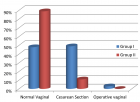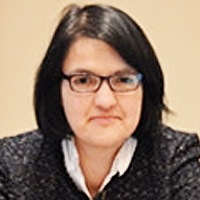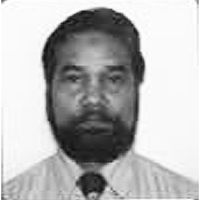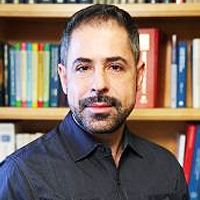Abstract
Research Article
Effectiveness of an Ayurvedic Gel for Tooth Pain Relief Due to Dental Caries: A Randomized Controlled Trial
Nandlal Bhojraj*, Prem K Sreenivasan, Paras Mull Gehlot, Vinutha Manjunath and Manjunath MK
Published: 19 June, 2024 | Volume 8 - Issue 1 | Pages: 013-019
Aim: To evaluate the effectiveness of an ayurvedic gel in tooth pain reduction due to dental caries.
Materials and methods: This in vivo cross-over design study enrolled adults with at least one tooth with caries and a symptom of pain after the application of an ice stimulus. Two hundred patients were screened and eligible patients were enrolled in the study. Forty-five subjects completed washout phases before each recall visit. During each recall visit, subjects evaluated pain relief following an ice bar stimulus and one random finger-tip application of a treatment i.e. Ayurveda Herbal gel containing clove oil, camphor, and menthol (Ayurveda Herbal Gel Group), and two control formulations: a gel without active ingredients and commercial olive oil as a surrogate of home remedy. At each assessment, subjects used a stopwatch to record the onset of pain relief and tooth pain using visual analog scores (VAS), dental pain scores (DPS), and relief from tooth pain by dental pain relief scores (DPRS). After each treatment, subjects recorded their satisfaction with the provided treatment using a four-point satisfaction index. Data were tabulated and statistical analysis was performed with (ANCOVA) and two-way ANOVA with a p - value of 0.05 considered statistically significant.
Results: Forty-five subjects (28 males and 17 females) completed the entire study without any adverse events. Application of the Ayurveda gel resulted in a significantly faster onset of pain relief (2.47 min) in comparison to the onset of pain relief after 4 minutes recorded with the controls (p < 0.05). Subjects reported lower VAS and DPS scores over the study period of evaluation when using the Ayurveda gel compared to the application of each control formulation. Subjects also reported greater relief of pain and greater satisfaction after the application of the Ayurveda gel as compared to the controls.
Conclusion: Significantly better tooth pain relief from caries was observed from an Ayurveda Herbal gel than from controls.
Read Full Article HTML DOI: 10.29328/journal.jcad.1001041 Cite this Article Read Full Article PDF
Keywords:
Dental pain; Dental caries; Ayurvedic medicine; Visual analog scale
References
- Roberson TM, Heymann HO, Swift EJ. Cariology: the lesion, etiology, prevention and control. In: Sturdevant's Art and Science of Operative Dentistry. 5th ed. New Delhi, India: Mosby Elsevier; 2008; 65-78.
- National Institute of Health Consensus Development Panel. National Institutes of Health Consensus Development Conference statement. Diagnosis and management of dental caries throughout life, March 26-28, 2001. J Am Dent Assoc. 2001 Aug;132(8):1153-61. doi: 10.14219/jada.archive.2001.0343. PMID: 11575024.
- Bagramian RA, Garcia-Godoy F, Volpe AR. The global increase in dental caries. A pending public health crisis. Am J Dent. 2009 Feb;22(1):3-8. PMID: 19281105.
- Kidd EAM. Essentials of Dental Caries. 3rd ed. New York: Oxford University Press; 2005.
- Chung G, Oh SB. TRP channels in dental pain. Open Pain J. 2013; 6:31-36.
- Shinde SU, Khairnar MR, Wadgave U, Kalghatgi S, Kadam HR. Comparative Efficacy of Analdent (Herbal Analgesic Preparation) and Aceclofenac on Pain Intensity After Tooth Extraction: A Split-Mouth Randomized Clinical Trial. J Maxillofac Oral Surg. 2023 Mar;22(1):152-158. doi: 10.1007/s12663-022-01748-9. Epub 2022 Jun 25. PMID: 36703681; PMCID: PMC9871148.
- Gupta C, Kumari A, Garg AP, Catanzaro R, Marotta F. Comparative study of cinnamon oil and clove oil on some oral microbiota. Acta Biomed. 2011 Dec;82(3):197-9. PMID: 22783715.
- Yadav R, Yadav SK. Dental disease and its cure: a review. Asian J Pharm Clin Res. 2013;6(2):16-20.
- Nuñez L, Aquino MD. Microbicide activity of clove essential oil (Eugenia caryophyllata). Braz J Microbiol. 2012 Oct;43(4):1255-60. doi: 10.1590/S1517-83822012000400003. Epub 2012 Jun 1. PMID: 24031950; PMCID: PMC3769004.
- Tanko Y, Mohammed A, Okasha MA, Umar AH, Magaji RA. Anti-nociceptive and anti-inflammatory activities of ethanol extract of syzygium aromaticum flower bud in Wistar rats and mice. Afr J Tradit Complement Altern Med. 2008 Jan 22;5(2):209-12. doi: 10.4314/ajtcam.v5i2.31275. PMID: 20161939; PMCID: PMC2816534.
- Daniel AN, Sartoretto SM, Schmidt G, Caparroz-Assef SM, Bersani-Amado CA, Cuman RK. Anti-inflammatory and antinociceptive activities of eugenol essential oil in experimental animal models. Rev Bras Farmacogn. 2009; 19:212-217.
- Kumarswamy A. Multimodal management of dental pain with focus on alternative medicine: A novel herbal dental gel. Contemp Clin Dent. 2016 Apr-Jun;7(2):131-9. doi: 10.4103/0976-237X.183066. PMID: 27307656; PMCID: PMC4906852.
- Chaudhari LK, Jawale BA, Sharma S, Sharma H, Kumar CD, Kulkarni PA. Antimicrobial activity of commercially available essential oils against Streptococcus mutans. J Contemp Dent Pract. 2012 Jan 1;13(1):71-4. doi: 10.5005/jp-journals-10024-1098. PMID: 22430697.
- Gangarosa LP Sr, Ciarlone AE, Neaverth EJ, Johnston CA, Snowden JD, Thompson WO. Use of verbal descriptors, thermal scores and electrical pulp testing as predictors of tooth pain before and after application of benzocaine gels into cavities of teeth with pulpitis. Anesth Prog. 1989 Nov-Dec;36(6):272-5. PMID: 2490060; PMCID: PMC2163984.
- Zero DT. Dental caries process. Dent Clin North Am. 1999 Oct;43(4):635-64. PMID: 10553248.
- Holland GR. Dental pain, etiology, pathogenesis and management. In Schmidt RF and Willis WD. Encyclopedia of Pain 2007; 538-540. Springer .New York
- Närhi M, Jyväsjärvi E, Virtanen A, Huopaniemi T, Ngassapa D, Hirvonen T. Role of intradental A- and C-type nerve fibres in dental pain mechanisms. Proc Finn Dent Soc. 1992;88 Suppl 1:507-16. PMID: 1508908.
- Matthews B, Vongsavan N. Interactions between neural and hydrodynamic mechanisms in dentine and pulp. Arch Oral Biol. 1994;39 Suppl:87S-95S. doi: 10.1016/0003-9969(94)90193-7. PMID: 7702472.
- Sacerdote P, Levrini L. Peripheral mechanisms of dental pain: the role of substance P. Mediators Inflamm. 2012;2012:951920. doi: 10.1155/2012/951920. Epub 2012 Feb 9. PMID: 22474402; PMCID: PMC3306979.
- Rodd HD, Boissonade FM. Substance P expression in human tooth pulp in relation to caries and pain experience. Eur J Oral Sci. 2000 Dec;108(6):467-74. doi: 10.1034/j.1600-0722.2000.00924.x. PMID: 11153921.
- Aneja KR, Joshi R. Antimicrobial Activity of Syzygium aromaticum and Its Bud Oil against Dental Caries Causing Microorganisms. Ethnobotanical Leaflets. 2010; 14: 960-75
- International Organization for Standardization Oil of clove buds [Syzygium aromaticum (Linnaeus) Merril and Perry, syn. Eugenia caryophyllus (Sprengel) Bullock and S. Harrison]. ISO-Directive 3142/1997, Geneva, Switzerland, 2002.
- Blumenthal, M. The Complete German Commission E Monographs: Therapeutic Guide to Herbal Medicines. Austin: American Botanical Council, 1998.
- Awang DVC. Tyler's Herbs of Choice: The Therapeutic Use of Phytomedicinals. 3rd ed. CRC Press; 2009.
- Evans WC. Trease and Evans Pharmacognosy. 14th ed. London: Saunders; 2001.
- Ghelardini C, Galeotti N, Di Cesare Mannelli L, Mazzanti G, Bartolini A. Local anaesthetic activity of beta-caryophyllene. Farmaco. 2001 May-Jul;56(5-7):387-9. doi: 10.1016/s0014-827x(01)01092-8. PMID: 11482764.
- Chaieb K, Hajlaoui H, Zmantar T, Kahla-Nakbi AB, Rouabhia M, Mahdouani K, Bakhrouf A. The chemical composition and biological activity of clove essential oil, Eugenia caryophyllata (Syzigium aromaticum L. Myrtaceae): a short review. Phytother Res. 2007 Jun;21(6):501-6. doi: 10.1002/ptr.2124. PMID: 17380552.
- Cai L, Wu CD. Compounds from Syzygium aromaticum possessing growth inhibitory activity against oral pathogens. J Nat Prod. 1996 Oct;59(10):987-90. doi: 10.1021/np960451q. PMID: 8904847.
- Lee MH, Yeon KY, Park CK, Li HY, Fang Z, Kim MS, Choi SY, Lee SJ, Lee S, Park K, Lee JH, Kim JS, Oh SB. Eugenol inhibits calcium currents in dental afferent neurons. J Dent Res. 2005 Sep;84(9):848-51. doi: 10.1177/154405910508400913. PMID: 16109996.
- Khan ZA, Prabhu N, Ahmed N, Lal A, Issrani R, Maqsood A, Alam MK, Alanazi S, Aljohani FM, Almndel MN, Alolait MAA. A Comparative Study to Evaluate the Effect of Honey and Zinc Oxide Eugenol Dressing for the Treatment of Dry Socket: A Double-Blind Randomized Controlled Trial. Appl Sci. 2022; 12(6):6.
- Kurian R, Arulmozhi DK, Veeranjaneyulu A, Bodhankar SL. Effect of eugenol on animal models of nociception. Indian J Pharmacol. 2006; 38:341-345.
- Abbott FV, Franklin KBJ, Westbrook FR. The formalin test: scoring properties of the first and second phases of the pain response in rats. Pain. 1995 Jan;60(1):91-102. doi: 10.1016/0304-3959(94)00095-V. PMID: 7715946.
- Raghavenra H, Diwakr BT, Lokesh BR, Naidu KA. Eugenol--the active principle from cloves inhibits 5-lipoxygenase activity and leukotriene-C4 in human PMNL cells. Prostaglandins Leukot Essent Fatty Acids. 2006 Jan;74(1):23-7. doi: 10.1016/j.plefa.2005.08.006. Epub 2005 Oct 7. PMID: 16216483.
- Kim SS, Oh OJ, Min HY, Park EJ, Kim Y, Park HJ, Nam Han Y, Lee SK. Eugenol suppresses cyclooxygenase-2 expression in lipopolysaccharide-stimulated mouse macrophage RAW264.7 cells. Life Sci. 2003 Jun 6;73(3):337-48. doi: 10.1016/s0024-3205(03)00288-1. PMID: 12757841.
- Duke JA. Handbook of medicinal herbs. 2nd Boca Raton, 2002; FL CRC press
- Park SH, Sim YB, Lee JK, Kim SM, Kang YJ, Jung JS, Suh HW. The analgesic effects and mechanisms of orally administered eugenol. Arch Pharm Res. 2011 Mar;34(3):501-7. doi: 10.1007/s12272-011-0320-z. Epub 2011 May 6. PMID: 21547684.
- Dal Bó W, Luiz AP, Martins DF, Mazzardo-Martins L, Santos AR. Eugenol reduces acute pain in mice by modulating the glutamatergic and tumor necrosis factor alpha (TNF-α) pathways. Fundam Clin Pharmacol. 2013 Oct;27(5):517-25. doi: 10.1111/j.1472-8206.2012.01052.x. Epub 2012 Jul 8. PMID: 22775297.
- Lee YY, Hung SL, Pai SF, Lee YH, Yang SF. Eugenol suppressed the expression of lipopolysaccharide-induced proinflammatory mediators in human macrophages. J Endod. 2007 Jun;33(6):698-702. doi: 10.1016/j.joen.2007.02.010. Epub 2007 Apr 2. PMID: 17509409.
- Galeotti N, Di Cesare Mannelli L, Mazzanti G, Bartolini A, Ghelardini C. Menthol: a natural analgesic compound. Neurosci Lett. 2002 Apr 12;322(3):145-8. doi: 10.1016/s0304-3940(01)02527-7. PMID: 11897159.
- El Karim IA, Linden GJ, Curtis TM, et al. Human dental pulp fibroblasts express the "cold-sensing" transient receptor potential channels TRPA1 and TRPM8. J Endod. 2011; 37:473-478.
- Malmberg AB, Yaksh TL. Voltage-sensitive calcium channels in spinal nociceptive processing: blockade of N- and P-type channels inhibits formalin-induced nociception. J Neurosci. 1994 Aug;14(8):4882-90. doi: 10.1523/JNEUROSCI.14-08-04882.1994. PMID: 8046458; PMCID: PMC6577170.
- Berman LH, Hartwell T. Diagnosis in Cohen's Pathways of the Pulp. In: Hargreaves KM, Cohen S, eds. 10th ed. St. Louis, MO: Mosby Elsevier; 2011; 2-39.
- Miglani S, Aggarwal V, Ahuja B. Dentin hypersensitivity: Recent trends in management. J Conserv Dent. 2010 Oct;13(4):218-24. doi: 10.4103/0972-0707.73385. PMID: 21217949; PMCID: PMC3010026.
- Holland GR, Narhi MN, Addy M, Gangarosa L, Orchardson R. Guidelines for the design and conduct of clinical trials on dentine hypersensitivity. J Clin Periodontol. 1997 Nov;24(11):808-13. doi: 10.1111/j.1600-051x.1997.tb01194.x. PMID: 9402502.
Figures:
Similar Articles
-
The protective potential of Carbonic Anhydrase VI (CA VI) against tooth decay in children: A systematic review of the literatureDaniele de Cassia Rodrigues Picco*,Lenita Marangoni Lopes,Carolina Steiner-Oliveira,Marinês Nobre dos Santos. The protective potential of Carbonic Anhydrase VI (CA VI) against tooth decay in children: A systematic review of the literature. . 2022 doi: 10.29328/journal.jcad.1001028; 6: 021-027
-
Effectiveness of an Ayurvedic Gel for Tooth Pain Relief Due to Dental Caries: A Randomized Controlled TrialNandlal Bhojraj*, Prem K Sreenivasan, Paras Mull Gehlot, Vinutha Manjunath, Manjunath MK. Effectiveness of an Ayurvedic Gel for Tooth Pain Relief Due to Dental Caries: A Randomized Controlled Trial. . 2024 doi: 10.29328/journal.jcad.1001041; 8: 013-019
-
Comparison of Trigger Point Lidocaine Injection and Stabilization Splint Use in Myofascial Orofacial Pain TreatmentAyşegül Pulatkan, Müge Çına*. Comparison of Trigger Point Lidocaine Injection and Stabilization Splint Use in Myofascial Orofacial Pain Treatment. . 2024 doi: 10.29328/journal.jcad.1001045; 8: 040-046
Recently Viewed
-
Leiomyosarcoma in pregnancy: Incidental finding during routine caesarean sectionToon Wen Tang*,Phoon Wai Leng Jessie. Leiomyosarcoma in pregnancy: Incidental finding during routine caesarean section. Clin J Obstet Gynecol. 2021: doi: 10.29328/journal.cjog.1001094; 4: 092-095
-
Adult Neurogenesis: A Review of Current Perspectives and Implications for Neuroscience ResearchAlex, Gideon S*,Olanrewaju Oluwaseun Oke,Joy Wilberforce Ekokojde,Tolulope Judah Gbayisomore,Martina C. Anene-Ogbe,Farounbi Glory,Joshua Ayodele Yusuf. Adult Neurogenesis: A Review of Current Perspectives and Implications for Neuroscience Research. J Neurosci Neurol Disord. 2024: doi: 10.29328/journal.jnnd.1001102; 8: 106-114
-
Late discover of a traumatic cardiac injury: Case reportBenlafqih C,Bouhdadi H*,Bakkali A,Rhissassi J,Sayah R,Laaroussi M. Late discover of a traumatic cardiac injury: Case report. J Cardiol Cardiovasc Med. 2019: doi: 10.29328/journal.jccm.1001048; 4: 100-102
-
A two-phase sonographic study among women with infertility who first had normal sonographic findingsKalu Ochie*,Abraham John C. A two-phase sonographic study among women with infertility who first had normal sonographic findings. Clin J Obstet Gynecol. 2022: doi: 10.29328/journal.cjog.1001117; 5: 101-103
-
Sinonasal Myxoma Extending into the Orbit in a 4-Year Old: A Case PresentationJulian A Purrinos*, Ramzi Younis. Sinonasal Myxoma Extending into the Orbit in a 4-Year Old: A Case Presentation. Arch Case Rep. 2024: doi: 10.29328/journal.acr.1001099; 8: 075-077
Most Viewed
-
Evaluation of Biostimulants Based on Recovered Protein Hydrolysates from Animal By-products as Plant Growth EnhancersH Pérez-Aguilar*, M Lacruz-Asaro, F Arán-Ais. Evaluation of Biostimulants Based on Recovered Protein Hydrolysates from Animal By-products as Plant Growth Enhancers. J Plant Sci Phytopathol. 2023 doi: 10.29328/journal.jpsp.1001104; 7: 042-047
-
Sinonasal Myxoma Extending into the Orbit in a 4-Year Old: A Case PresentationJulian A Purrinos*, Ramzi Younis. Sinonasal Myxoma Extending into the Orbit in a 4-Year Old: A Case Presentation. Arch Case Rep. 2024 doi: 10.29328/journal.acr.1001099; 8: 075-077
-
Feasibility study of magnetic sensing for detecting single-neuron action potentialsDenis Tonini,Kai Wu,Renata Saha,Jian-Ping Wang*. Feasibility study of magnetic sensing for detecting single-neuron action potentials. Ann Biomed Sci Eng. 2022 doi: 10.29328/journal.abse.1001018; 6: 019-029
-
Pediatric Dysgerminoma: Unveiling a Rare Ovarian TumorFaten Limaiem*, Khalil Saffar, Ahmed Halouani. Pediatric Dysgerminoma: Unveiling a Rare Ovarian Tumor. Arch Case Rep. 2024 doi: 10.29328/journal.acr.1001087; 8: 010-013
-
Physical activity can change the physiological and psychological circumstances during COVID-19 pandemic: A narrative reviewKhashayar Maroufi*. Physical activity can change the physiological and psychological circumstances during COVID-19 pandemic: A narrative review. J Sports Med Ther. 2021 doi: 10.29328/journal.jsmt.1001051; 6: 001-007

HSPI: We're glad you're here. Please click "create a new Query" if you are a new visitor to our website and need further information from us.
If you are already a member of our network and need to keep track of any developments regarding a question you have already submitted, click "take me to my Query."


















































































































































